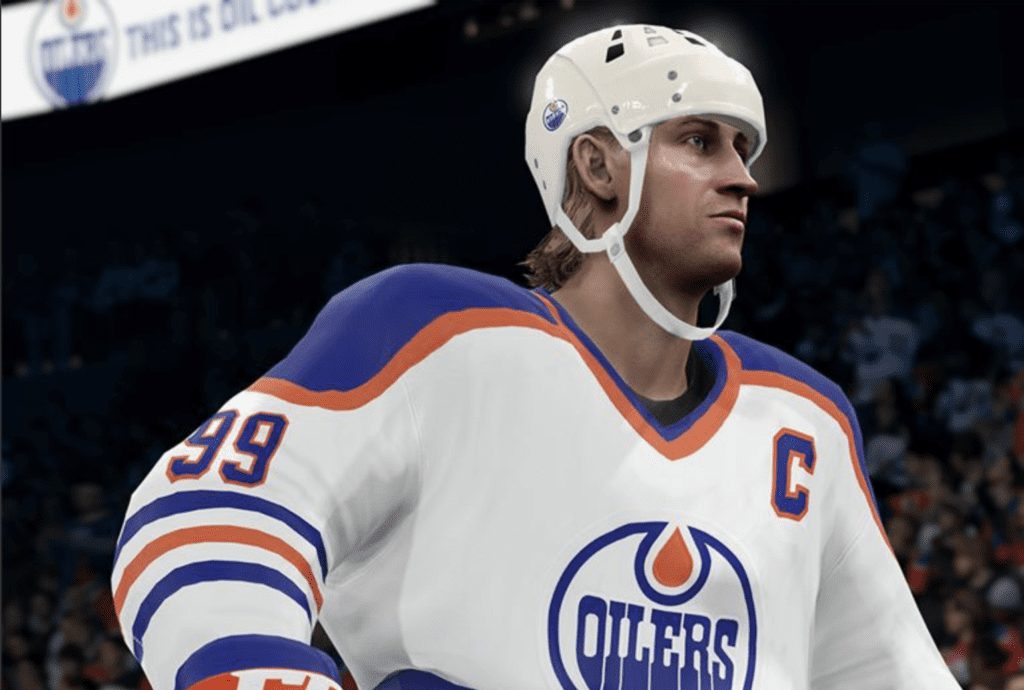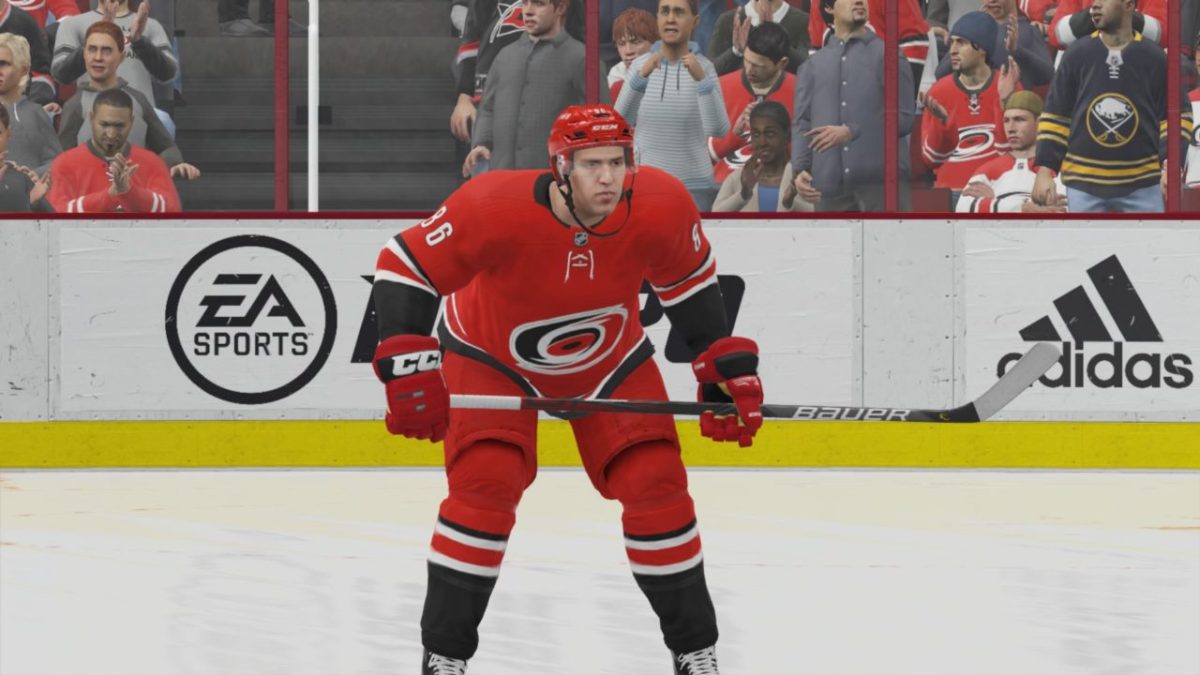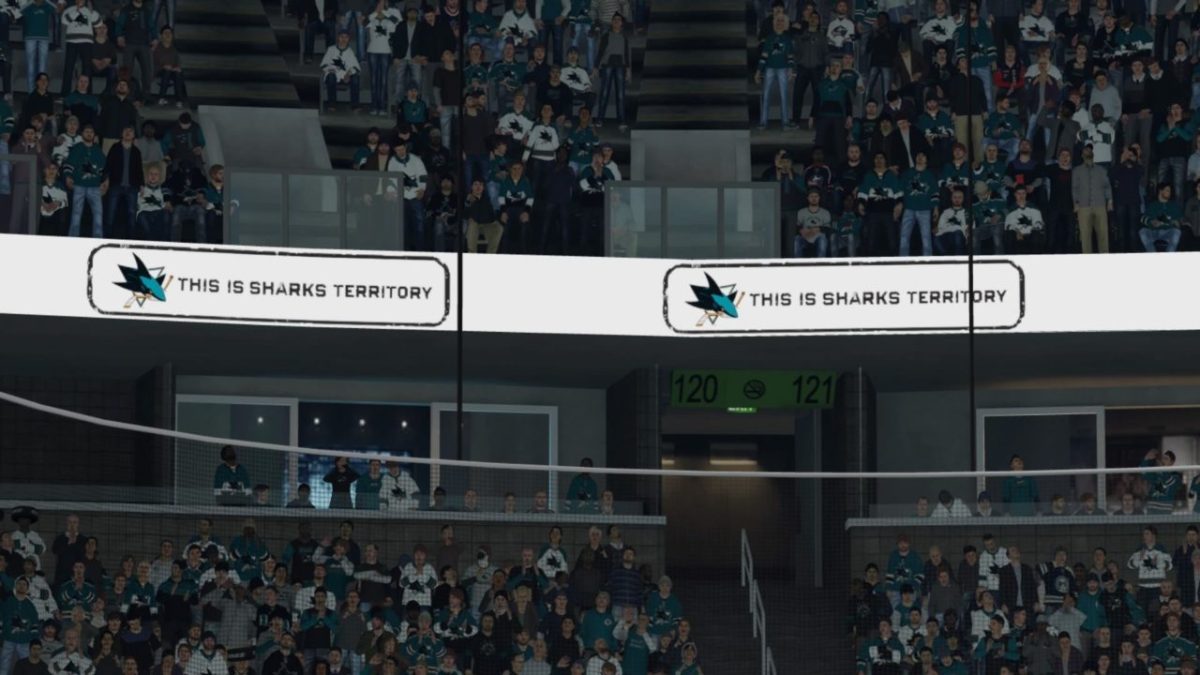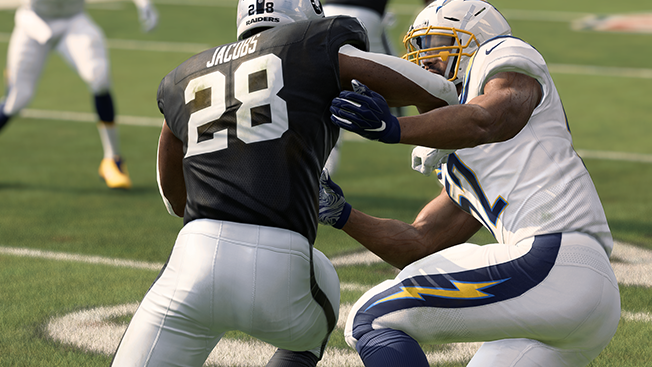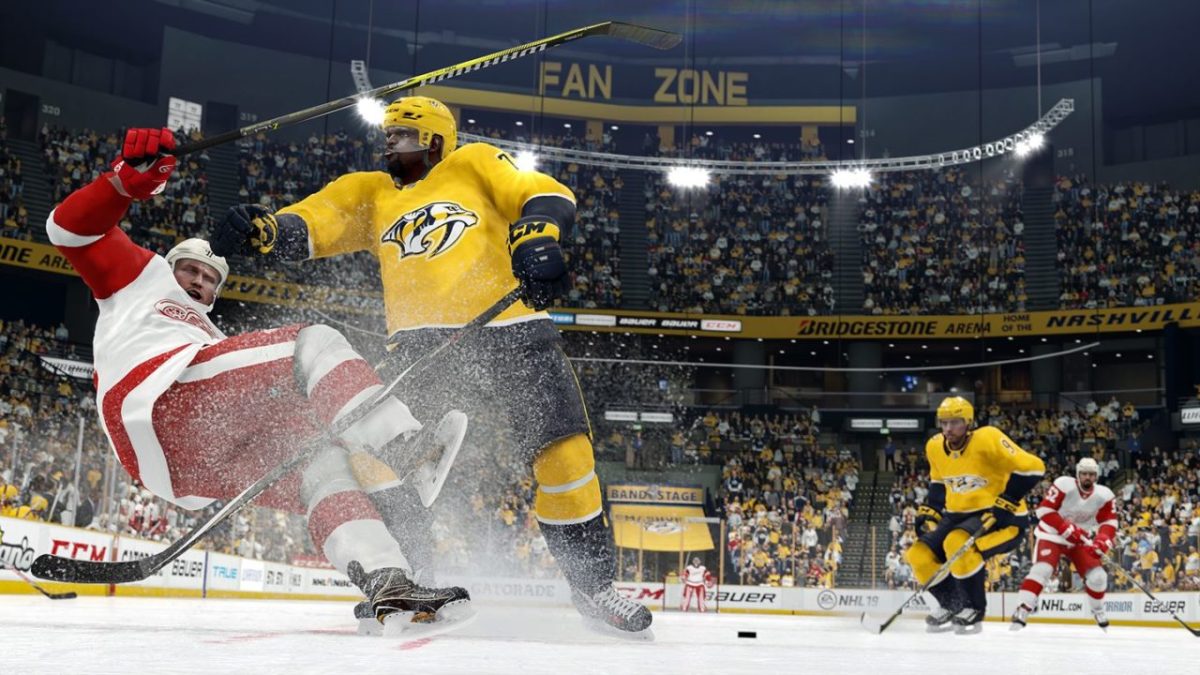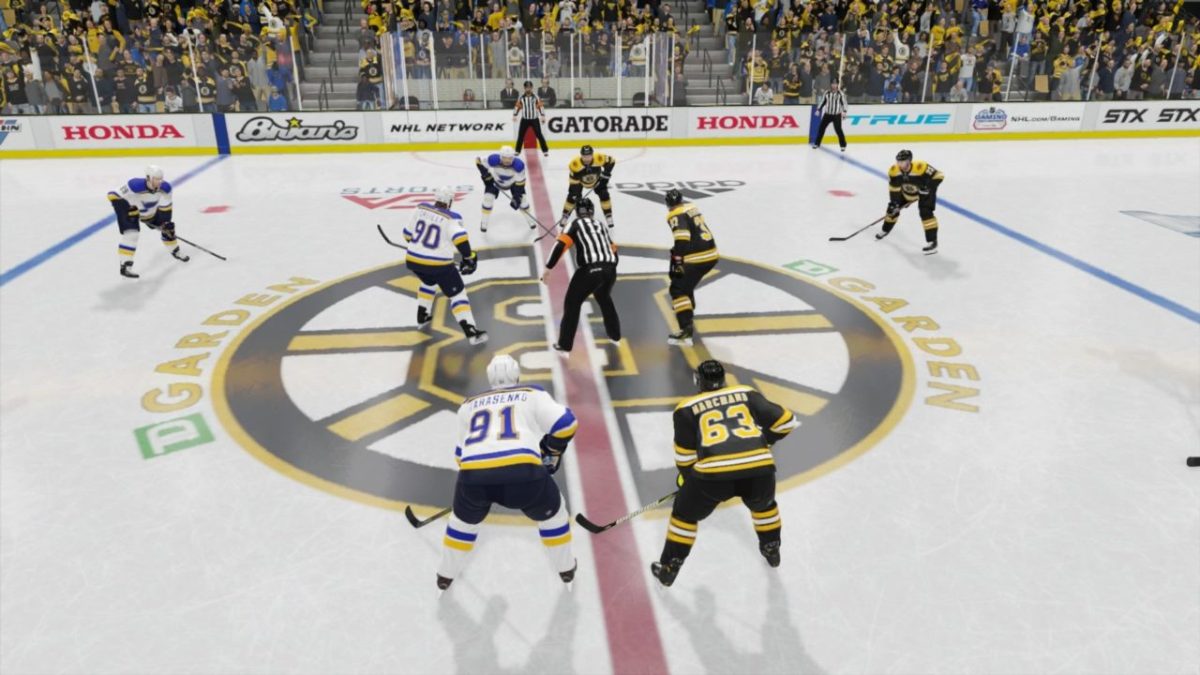For a well-respected franchise that’s enjoyed its share of success over the years, most would have to admit that EA’s NHL hockey series has ultimately been largely disappointing in recent years. With most fond memories of NHL 94 having long since dissipated, the series has been stuck in a bit of a holding pattern as of late, plagued by persistent issues with choppy skating, overpowered poke checks, sketchy physics and non-existent puck pick-ups. But hockey fans were given a small glimmer of hope earlier this year with the release of the NHL 19 beta, as people were quick to notice how developers had managed to address many of the community’s main concerns regarding what was holding the game back. Now that the full version of the game is here, it’s a pleasure to report that NHL 19 fulfills the promise of that beta by taking the first big step forward for the series in quite a while, establishing core gameplay mechanics that, while still not flawless, are at least more rewarding and fun than they have been in quite some time.
World of CHEL
New to the series, the World of CHEL (its unmistakably millennial name is derived from the last syllable of NHL if you say it out loud) is an expansive hub where you can create a player and compete in a variety of different modes, either online or offline. The layout of the modes seems specifically designed to ease you into the somewhat intimidating realm of playing both with and against others online, guiding you all the way from playing solo to dropping you in a true 6-on-6 hockey game with other users.
No matter which way you prefer to play, one of the biggest draws of the World of CHEL is the ability to level up your player as you progress, earning rewards along the way that include hockey bags and special skills that you can apply to your player to give a boost to certain attributes. So what’s in those hockey bags? There are plenty of possibilities, from articles of clothing both casual (think jeans and wildly patterned parkas) and pro (think team jackets and jerseys) to custom goal celebrations. You’re also able to build and save different “loadouts” for your player, which will see you choosing between the various archetypes that have become a staple of EASHL, and then carefully applying those special skills in order to create the ideal athlete for different styles of play. This system allows for plenty of variation and collecting rewards from hockey bags is plenty enjoyable, but I wish the rewards were a little more tailored to your preferred position. As of now, it’s far too common to pull rewards from hockey bags that can only be used by goalies when you might have no desire to ever even play goalie. The best thing about all of this? There are absolutely no microtransactions that can be used to cut corners or purchase gear, so the only way to progress is by playing the game.
As for the modes themselves, Ones or Pro-Am are good places to start if you’re looking to get the hang of the controls and how to use your player. Ones is an absolute free-for-all that might not be to everyone’s tastes, especially if you enjoy the cooperative team play elements of hockey, but there’s frenetic fun to be had if you’re willing to embrace its limitations. The mode pits you against two other users and has you go head-to-head-to-head to see who can score the most goals, usually involving also violently slamming into each other regularly. Pro-Am allows you to play with and against legends from hockey’s history in a game of threes, and gives you the opportunity to earn rewards by winning and playing well yourself in the process. It successfully eases you into playing as a team while keeping the difficulty relatively low initially, and allows you to avoid any puck hogs that you could encounter online while you are learning the basics.
Once you get the hang of things in these more introductory modes, you’ll have the experience required to start tackling online play in the EASHL in either 3’s or 6’s. It’s in these online modes where NHL 19 really captures the full experience of hockey, requiring you to work together with teammates and play your own position well to defeat opponents. Naturally, this can be prove to be a little more difficult in drop-in games when you’re forced to try and mesh with strangers who may or may not be interested in playing as a team. But if you’re able to get enough friends together to form your own squad, it’s a blast to attempt to move your way up the ranks in seasons as you face off against other user teams trying to do the same.
Hockey Ultimate Team
Card-collecting modes have become a staple of modern sports video games and NHL 19 does not attempt to deviate from that trend. While NHL 19’s Hockey Ultimate Team might not be quite as stacked as similar modes in other games (Madden 19 and MLB The Show 18 seem to be the ones to beat at the moment), there’s still plenty to do and no shortage of pleasure to be had in the team-building and competitive play being offered here.
For starters, NHL 19 boasts over 200 legends that can be attained in any number of ways, from finding them in packs to acquiring them as rewards for completing challenges to purchasing them outright from the auction house. Also, you can obtain players that will be part of your collection permanently while others will only be on loan to you for a set number of games, so choose wisely about when you want to insert them into your lineup. With so many legends available — not to mention current players that can acquit themselves rather nicely on the ice as well — it doesn’t take too long to put together a respectable team as you work way up to trying to get your hands on Wayne Gretzky or Mario Lemieux.
There are quite a few different ways to plays within HUT as well, whether online or against the CPU, but there really aren’t any many new game modes to be found. Familiar options like Online Seasons tasks you with moving all the way up from division 10 to division 1 while Competitive Seasons will run the usual events throughout the year that provide rewards based on how you fare. Though there are an assortment of challenges that you can play against the CPU for coins and largely underwhelming pack rewards, there’s still no option to play seasons against the CPU in HUT, which would really go a long way in pleasing those who want to play the mode but don’t really care to play other people.
At least there’s a new objectives system that provides rewards based for completing daily challenges and more long-term milestones. This staple of other card-collecting modes was missing last year and it goes a long way in keeping you coming back for more day after day. By completing objectives, you’re able to not only build up capital so you can spend on players at the auction house but also you’ll acquire some pretty good player rewards directly from completing goals, whether on loan or permanently.
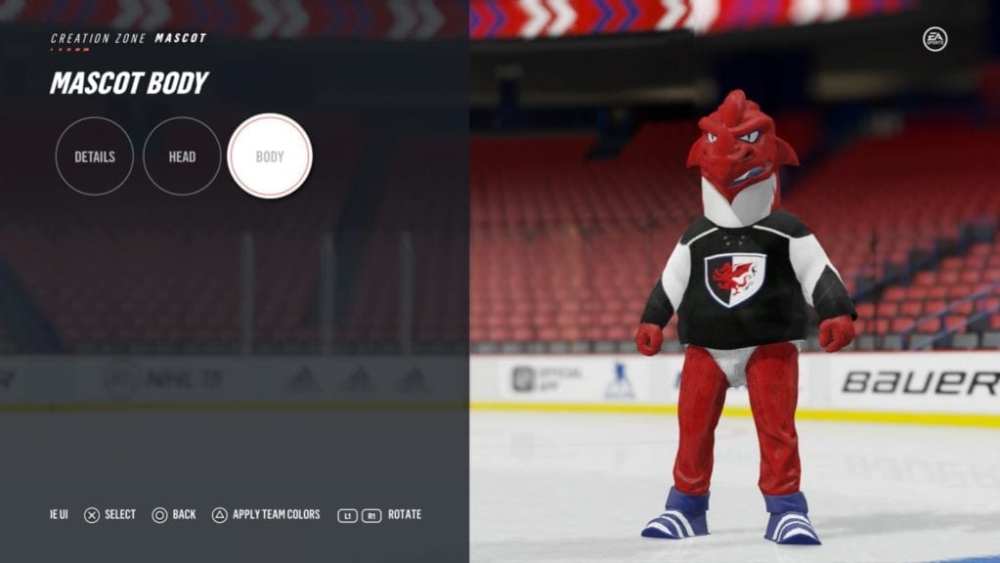
Franchise
Having been disappointed when the NHL series decided to do away with their online franchise mode a while back, it had admittedly been a few years since I’d delved into the game’s franchise mode, so I was pleasantly surprised to find how much depth can be found in the mode these days.
Right from the outset, there’s an option to either pick your favorite team and jump right in or you can start as a new expansion team, complete with an expansion draft where you can nab a player from each team prior to your first season. Creating a new team comes with the chance to make decisions on various fronts, including designing your team’s logo, arena and mascot. It’s all a bit more robust than I was expecting from an oft-neglected mode, and it only helps to get you connected with your team right from the jump to have a hand in so many aspects of not just how you’d like your team’s roster to shape up, but also its whole look and aesthetic. As someone who likes to have a say in certain matters but not every minute detail, it’s nice that you can also let the CPU take the reins on anything you’d rather not get involved in.
The overwhelming amount of options carries over to when you start progressing through seasons, where a detailed new scouting system has you considering when to hire and fire scouts, and how well your scouts have really evaluated the prospects assigned to them. As an owner, you can have a say in everything from whether or not to relocate your team to a different city to allotting a marketing budget to when to maintain the arena’s bathrooms. You’ll also need to regularly meet with disgruntled players and choose from a variety of approaches, ranging from coddling to tough love.
Gameplay
All of the modes in the world wouldn’t matter much if the action on the ice weren’t any good, and thankfully NHL 19 delivers in that regard. Skating feels much more fluid than it did in the past, allowing you to sense a steady increase in speed with each stride, but also has enough built-in responsiveness to allow for subtler movements that can especially come in handy when you are trying to stick with your man in front of the net or toeing the blue line in your attacking zone. Stick handling hasn’t changed all that much, but there are a few new nifty dekes you can put to use when the right moment arises.
Naturally, you can’t perform a deke without having the puck, and NHL 19 has managed to fix one huge problem that plagued NHL 18 by having players show better awareness when a puck is close to them, and display superior skills in getting the puck onto their stick and under their control. Yes, gone are the days when your player would regularly skate right by or even over pucks without demonstrating the most basic abilities at corralling the disc. There are still the rare occasions when a player might miss a puck that you feel they would ordinarily be able to pick up, but these are far rarer than they were last year, resulting in a much less frustrating experience. This is good because you may get frustrated instead by how difficult it can be to get one past the goalie this year. It took me a couple of games (and a whole lot of shots) to finally put one up on the scoreboard. You’ll still see a soft goal every now and then but don’t expect to get too many cheapies.
On the defensive side of things, the biggest change by far is that you can no longer expect to constantly use poke checks without consequence. NHL 18 made it far too easy to successfully poke pucks loose from players’ sticks, even in situations where your stick could seemingly go through the legs or torso of players without causing any harm. Now, you are forced to use your pokes much more selectively, as careless play with the stick can easily lead to a tripping penalty. A hot button issue when the beta was released, it appears as if the developers have largely held firm in their belief that there are other tactics besides poke checks that can and should be used defensively, with good positional play being the ultimate tool to combat oncoming attackers. There are still some instances (especially in the corners) where a well-timed poke will clip an opponent’s skate and trigger a tripping penalty (and an animation that causes them to flop like Neymar), but if you’re racking up too many tripping calls, it’s likely because you are consistently using the mechanic at inopportune times.
As far as those other defensive tactics go, hitting has seemingly replaced the poke check as the most effective tactic that can be used to slow down the offense. While there are few things more satisfying than lining someone up and laying them out with a perfectly executed body check that sends them careening onto the ice, the truth of the matter is that the benefits of hitting this year go beyond these rare dramatic moments of borderline assault. In fact, you don’t need to lay someone out to get them off the puck, as it’s now more common to use subtle contact to bump players just enough to cause them to lose possession. Perhaps because of how things were last year, it’s possible that the developers have overcompensated in having hitting be a little too overpowered compared to the dangers of the poke check, but it’s likely something they will be monitoring closely to try and strike an appropriate balance.
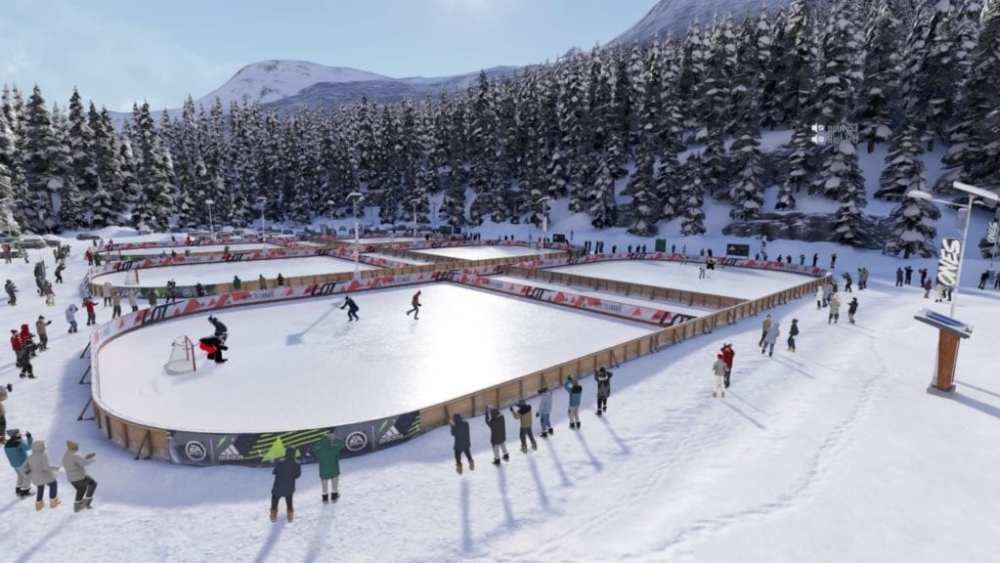
Presentation and Graphics
One of the things that NHL 19 does really well is provide helpful tutorials throughout the different modes to make things far less intimidating for the uninitiated as they’re trying to figure out how things work. It doesn’t stop at just explaining the particulars either, even going so far at times to do the video game equivalent of holding your hand through the process to show people exactly what they are expected to do. Some of these tutorials may be for items that are more obvious or intuitive than others, but there are surely areas where people were overwhelmed but now will feel more comfortable thanks to these tutorials being included. For example, building sets in Ultimate Team is something that some people don’t understand enough to even bother trying, but the game walks you through that process in a way that anyone can grasp.
On the ice, things don’t really look incredibly different from last year, which likely just indicates how the focus was more on getting the skating and player-on-player interactions right rather than going for any sort of graphics overhaul. It’s probably worth mentioning, however, that many of the modes within the World of Chel have games taking place outdoors at some sort of fictional winter resort, and this really adds a nice touch of nostalgia for anyone that grew up playing pond hockey.
Some of the player likenesses look better than others. For instance, they’ve done a pretty good job of capturing Gretzky in his prime with the hair flowing out of his helmet and all, but he’s the cover boy so what else would you expect? On the other hand, someone like Mats Sundin doesn’t look all that much like Mats Sundin. It’s nice to see old-school goalies playing without a helmet though, even if you spend the whole game fearing for their safety.
The commentary team of “Doc” Emrick and Eddie Olczyk are back for another year, and they do a serviceable if not exceptional job of replicating a TV broadcast, with some noticeable new material added into the mix. Along those same lines, all of the cutaways and replays that help keep things interesting during stoppages are going to feel awfully familiar, but it still succeeds in creating an exciting atmosphere for hockey. It really helps to hear the realistic roar of the crowd reacting to a big hit or losing their collective minds after a big goal, too. We also finally get to see the full five-man celebrations following goals that the community has been demanding for quite a while now.
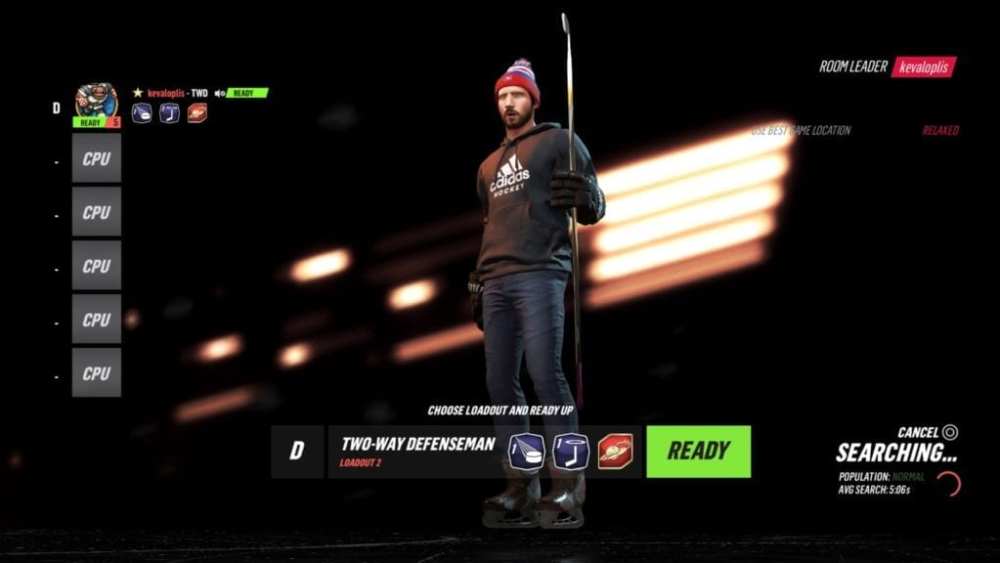
Online and Servers
While some online modes have been functioning as they should after the game’s launch — such as Online Versus and HUT, and and World of Chel modes like Ones and 3’s — there have been all sorts of problems for anyone with trying to get into EASHL drop-in games. Namely, the matchmaking will often indicate that the population size looking for game is normal but will then give you a timer showing that it will take up to five minutes to find a game. I’m sorry, but nothing about waiting five minutes to get into a game suggests that things are functioning normally. If you do decide to wait it out, you’ll usually find that the matchmaking will eventually return a fail message, and you can try again but you’ll be more likely to just move on to other modes (might I suggest Be A Pro if you’re looking for a similar offline experience).
Even in more recent days when the matchmaking has occasionally worked well enough that you can actually get matched up with some people, the experience is marred by that fact that the game’s countdown timer starts at 30 seconds. This means that you only have a half minute to fill the room with 11 other players, which will usually result in a game either starting with maybe only one or two people per side or, more than likely, everyone backing out because they know they won’t be able to play the 6-on-6 game they wanted. An easy solution would be to simply give people more time to find enough players.
Given the fact that EASHL drop-in is perhaps the most accessible mode for people looking to take their talents online in an environment that promotes competitiveness but also cooperation, it’s extremely disappointing to find this key mode not functioning as it should right after the game’s launch. Of course, this only continues a growing trend of sports video games fumbling major aspects of a game’s release and risks alienating players who may justifiably feel as if their trust in the company has been undermined by not receiving what had been promised by the game’s developers.
Bottom Line
It would be easy to joke that NHL 19 didn’t exactly have the highest bar to clear in NHL 18, but that would be selling short the accomplishment of NHL 19‘s developers. They’ve used the feedback provided by the community regarding which areas of the gameplay were lacking and have been able to deliver something that is increasingly rare in the annual cycle of sports video games: a release that is significantly better than its predecessor.
By targeting basic elements like skating and the physics of how players interact with each other on the ice, they’ve managed to take what was previously an underwhelming experience riddled with troubling glitches and cheap exploits, and transform it into a game that more closely resembles the sport of hockey in all its glory.
Is it perfect? Of course not, especially considering how it’s nearly impossible to get into an EASHL drop-in game. But at the very least, it’s a return to form of sorts for the series.


